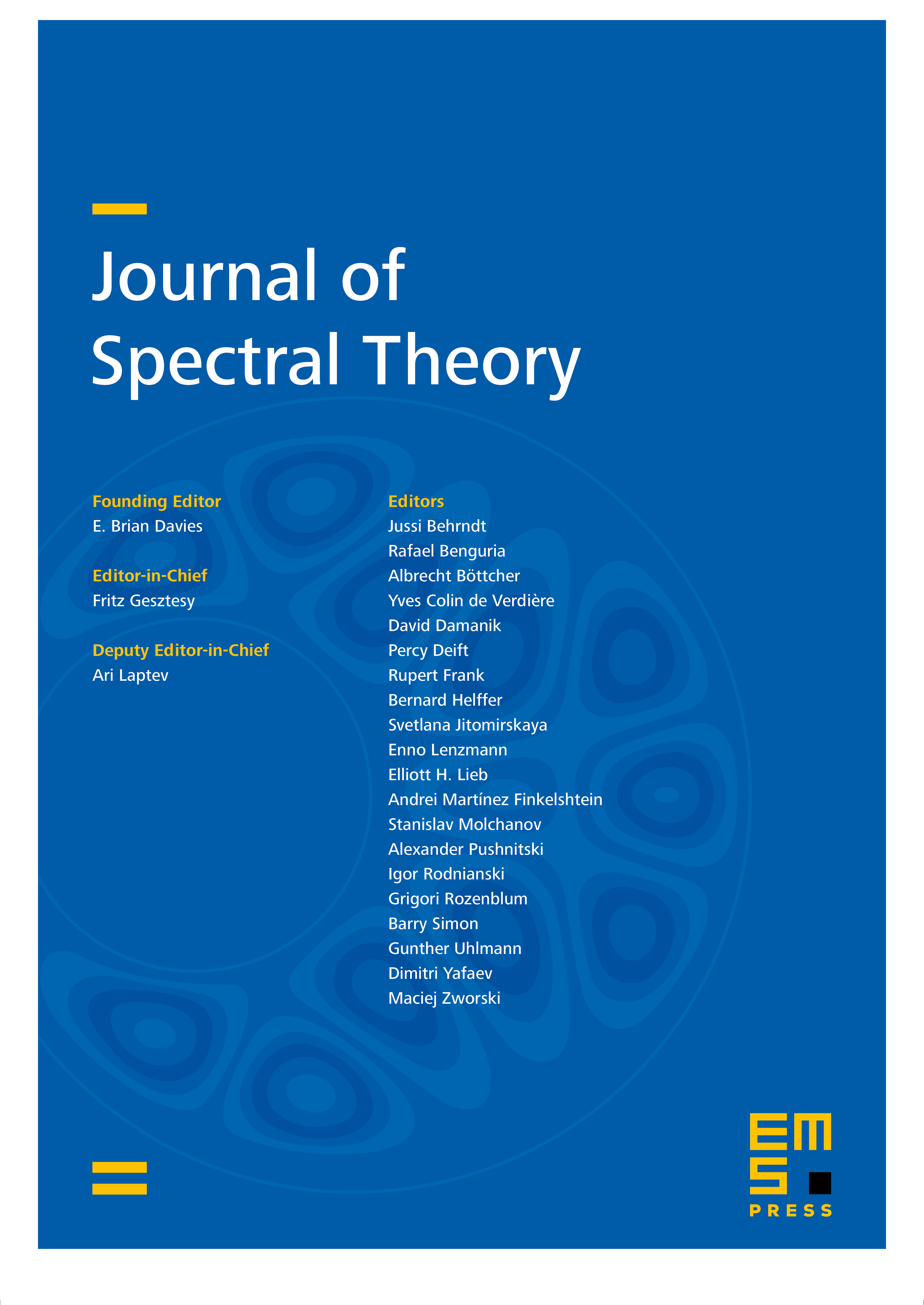Double operator integral methods applied to continuity of spectral shift functions
Alan L. Carey
The Australian National University, Canberra, AustraliaFritz Gesztesy
Baylor University, Waco, USAGalina Levitina
University of New South Wales, Sydney, AustraliaRoger Nichols
The University of Tennessee at Chattanooga, USADenis Potapov
University of New South Wales, Sydney, AustraliaFedor Sukochev
University of New South Wales, Sydney, Australia

Abstract
We derive two principal results in this note. To describe the first, assume that , , , , , are self-adjoint operators in a complex, separable Hilbert space , and suppose that
and
for some . Fix , odd, , and assume that for all ,
Then for any function in the class (cf. (1.1) for details),
Moreover, for each , , we prove the existence of constants and such that
which permits the use of differences of higher powers of resolvents to control the -norm of the left-hand side for .
Our second result is concerned with the continuity of spectral shift functions associated with a pair of self-adjoint operators in with respect to the operator parameter . For brevity, we only describe one of the consequences of our continuity results. Assume that and are fixed self-adjoint operators in , and there exists , odd, such that, , . For self-adjoint in we denote by the set of all self-adjoint operators in for which the containment , , holds. Suppose that and let denote a continuous path (in a suitable topology on , cf. (1.3)) from to in . If , then
The fact that higher powers , , of resolvents are involved, permits applications of this circle of ideas to elliptic partial differential operators in , . The methods employed in this note rest on double operator integral (DOI) techniques.
Cite this article
Alan L. Carey, Fritz Gesztesy, Galina Levitina, Roger Nichols, Denis Potapov, Fedor Sukochev, Double operator integral methods applied to continuity of spectral shift functions. J. Spectr. Theory 6 (2016), no. 4, pp. 747–779
DOI 10.4171/JST/140